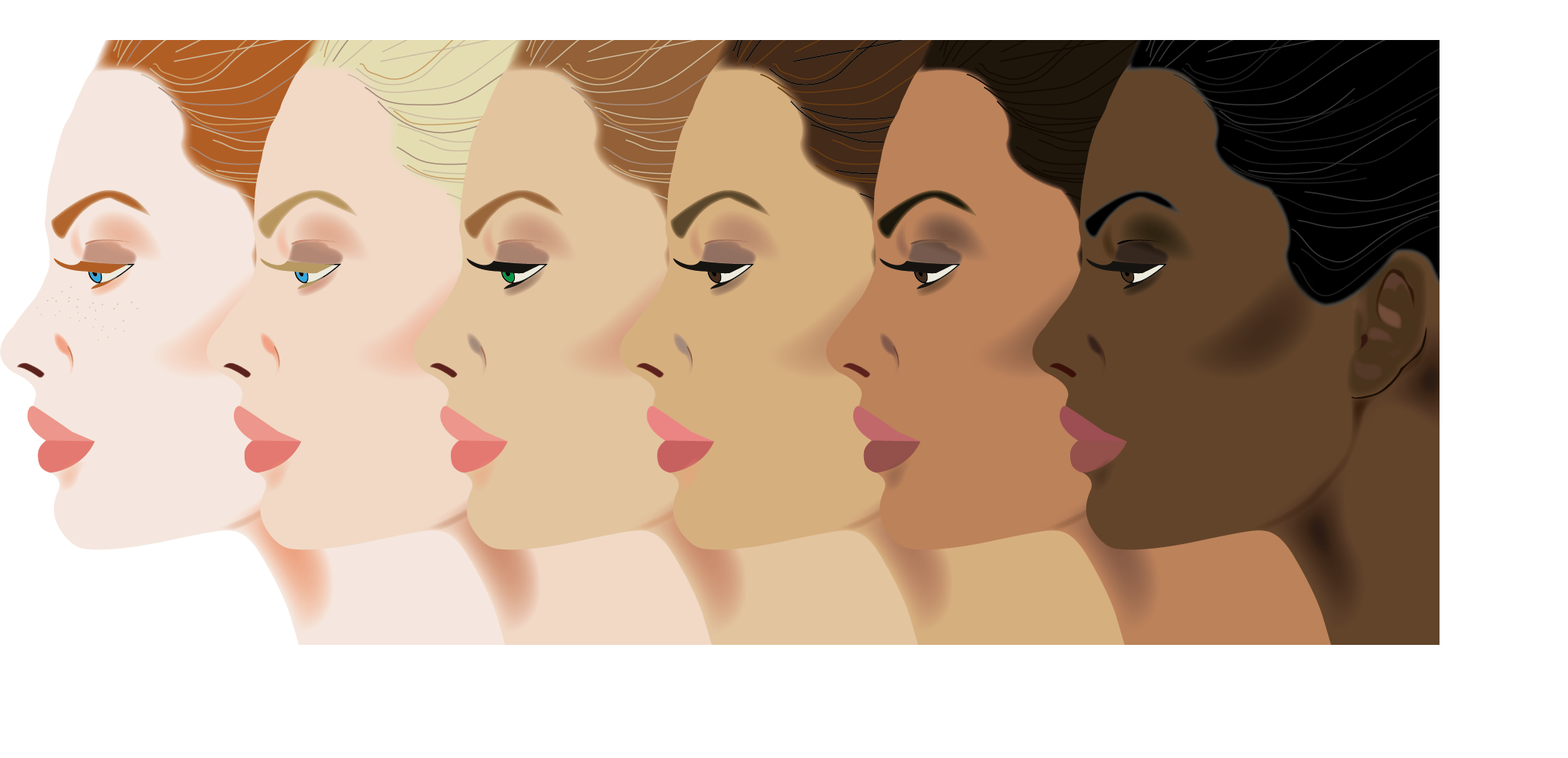As the biggest of all human organs, the skin covers the entire body and helps to protect it in many different ways. Though all human skin is essentially the same, different amounts of pigmentation give it different properties, which can affect how it responds to different stimuli.

The 'type' of skin can have affects on its response to many things including the likelihood of developing acne, resistance to UV radiation, how well a scar will heal and the visible signs of ageing such as wrinkles.
Devised by dermatologist Thomas B. Fitzpatrick in 1975, the eponymous Fitzpatrick scale is used by dermatologists to determine a person's skin type and thus their risk of numerous things such as scarring potential, sunburn and skin cancer. The scale groups skin into six types, based on the individual's genetic predisposition to melanin, which is the chemical that pigments skin.
If using the Fitzpatrick scale to self-identify skin type, it is important to look at an area of skin that does not receive regular exposure to sunlight, such as the skin of the stomach. The six skin types on the scale are:
- Type 1. This is the fairest of the six skin types, sometimes pale enough to be described as 'porcelain'. A person with type 1 skin, which is often freckled, is likely to have red or blonde hair. This skin type is extremely prone to sunburn but has the lowest potential for lasting scars.
- Type 2. Type 2 skin is quite fair, with a creamy complexion. People with this type of skin usually have light-coloured hair. The skin more frequently burns than tans after sun exposure. Scarring risk is quite low except in cases where the wound heals particularly slowly.
- Type 3. Somewhat darker than type 2, this type of skin can still be described as 'fair' but has a more golden tone. Type 3 skin tans relatively easily but care must be taken to avoid sunburn. The potential for scarring is higher than the two previous types.
- Type 4. People with type 4 skin often have dark eyes and hair. The caramel or olive coloured skin tans readily though prolonged exposure to the sun may still cause burns. Type 4 skin can easily be scarred.
- Type 5. Ranging in colour from dark olive to brown, type 5 skin rarely burns and instead tans easily. People with this skin type have a high potential for scarring.
- Type 6. Very dark brown in colour, this type of skin has an extremely high risk of being scarred after a wound.
Scarring can cause extreme emotional distress and in some cases can even cause physical issues as well. At Medigarments Ltd, we offer an array of products designed to help treat problem scars, including silicone gel/sheeting and pressure therapy garments. You can find out more details about these superlative products on our website or by getting in touch with our dedicated clinical team.